Cobblestone Changes
Copyright 2008
COBBLESTONE
COBBLESTONE
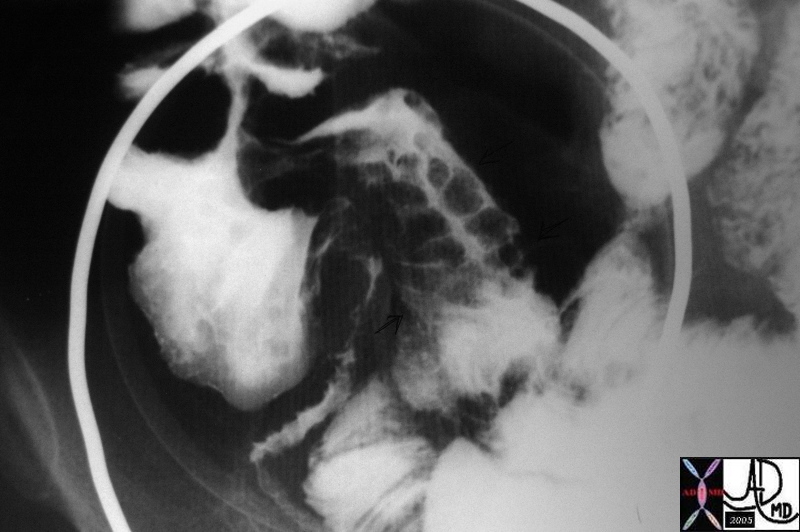 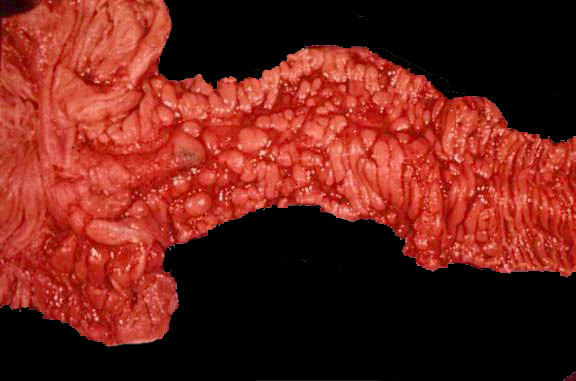
Cobblestone of the Terminal Ileum – Crohns Disease |
| 43159 small bowel fx ileum fx nodular mucosa fx cobblestone fx thickened folds fx narrowed lumen dx Crohns UGI SBFT Courtesy Ashley Davidoff MD AFD AFD
02477b02 small bowel terminal ileum mucosa fx inflammation ulceration fx nodules fx cobble stone thick walled dx Crohn’s disease ileocecal valve grosspathology Courtesy Dr Gutkin MD DB |
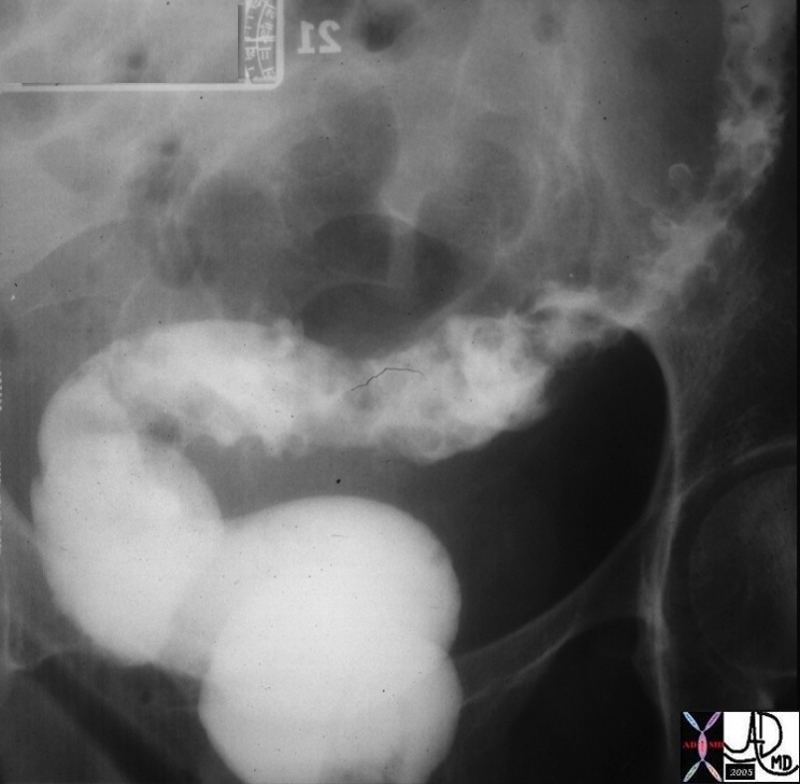
COBBLESTONE
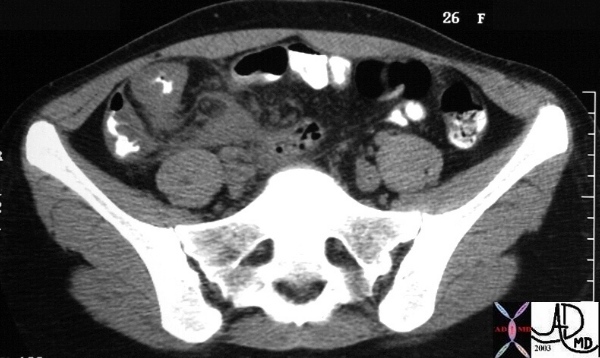
In this 26 female with Crohn’s disease, there are areas of “heaped up” soft tissue in the affected small bowel in the RLQ. One would usually call this finding mucosal thickening. However the valleys of these heaps are completely ulcerated and denuded which is difficult to infer on the CT, and easier on the barium studies, where the finding is known as cobblestoning. The transmural and active nature in this patient is demonstrated by the the extensive induration in the ileocolic ligament and induration of the fat. 29114 Courtesy Ashley Davidoff MD.
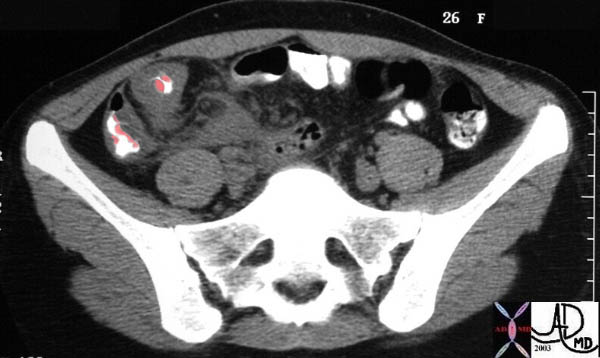
In this 26 female with Crohn’s disease, there are areas of “heaped up” soft tissue (pink overlay) in the affected small bowel in the RLQ. One would usually call this finding mucosal thickening. However the valleys of these heaps are completely ulcerated and denuded which is difficult to infer on the CT, and easier on the barium studies where the finding is known as cobblestoning. The transmural and active nature of the disease in this patient is demonstrated by the the extensive induration in the ileocolic ligament and induration of the fat.29114b01

In this 26 female with Crohn’s disease, there are areas of “heaped up” soft tissue in the affected small bowel in the RLQ. One would usually call this finding mucosal thickening. However the valleys of these heaps are completely ulcerated and denuded which is difficult to infer on the CT, and easier on the barium studies where the finding is known as cobblestoning. The stiffening of the bowel is noted by the concentric changes in the most anteriorly affected loop where both the lumen and the wall form almost a perfect concentric ring. Normal bowel is more pliable and active, and unless undergoing contraction has a much “looser” appearance. The transmural and active nature of the disease in this patient is demonstrated by the the extensive induration in the ileocolic ligament and induration of the fat29115 Courtesy Ashley Davidoff MD.
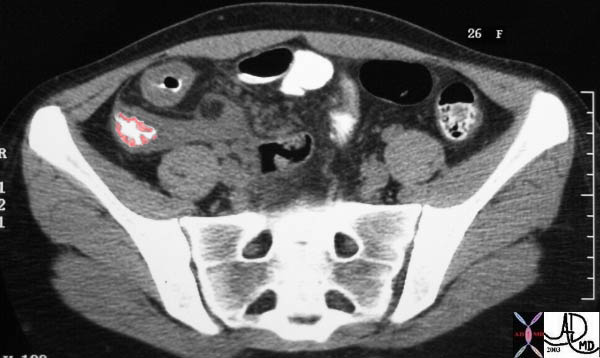
In this 26 female with Crohn’s disease, there are areas of “heaped up” soft tissue (pink overlay) in the affected small bowel in the RLQ. One would usually call this finding mucosal thickening. However the valleys of these heaps are completely ulcerated and denuded which is difficult to infer on the CT, and easier on the barium studies where the finding is known as cobblestoning. The transmural and active nature of the disease in this patient is demonstrated by the the extensive induration in the ileocolic ligament and induration of the fat
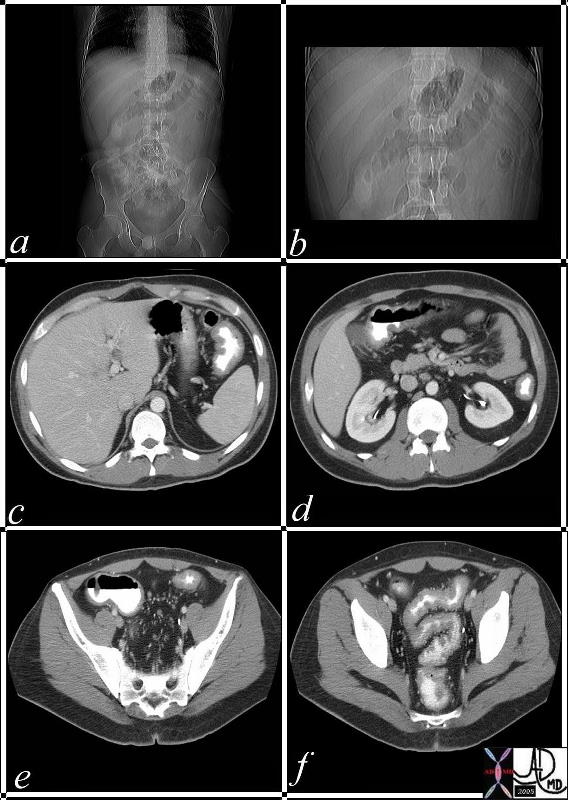
This is a case of severe and active Crohn’s active pancolitis. It is unusual that it is a pancolitis, without usual segmental behaviour and it has the appearance of thumbprinting which is characteristic of submucosal disease. We suspect that the thumbprinting in this ase is a severe case of cobblestoning. 34746 Courtesy Ashley Davidoff MD.